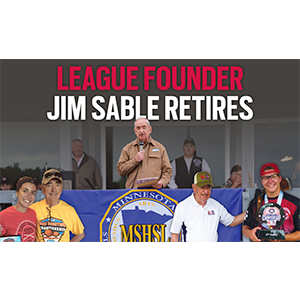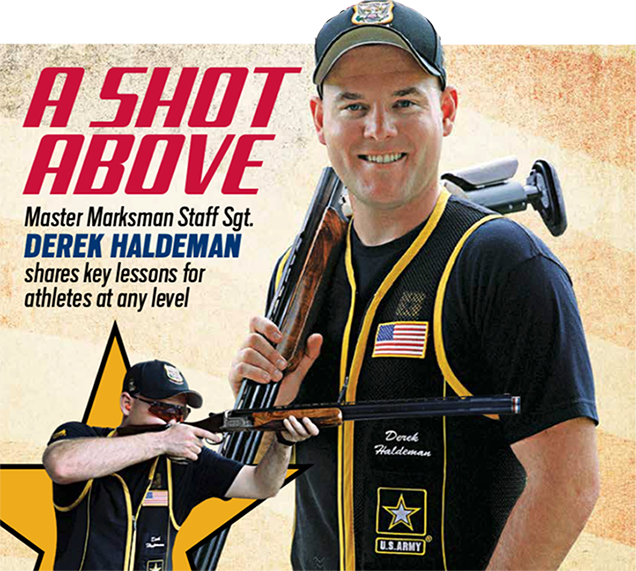
Recalling his hometown of Sunbury, Ohio, Staff Sgt. Derek Haldeman of the U.S Army Marksmanship Unit describes a setting familiar to many who developed an early passion for shooting sports.
Though it’s seen some rapid development in recent years, the small central Ohio town is surrounded by open countryside—flatlands and farming communities. “It’s not too exciting of a place, but if you’re a deer hunter, that’s the place to be, that’s for sure,” Haldeman says.
That makes sense for someone in his profession—except Haldeman didn’t grow up in a hunting family, nor one that did any shooting at all. The only firearm his family owned was his father’s U.S. Navy-issued pistol, which Haldeman remembers begging his dad to dig out.
“My dad was a firefighter for 30 years and I was actually homeschooled for the majority of my life,” Haldeman says. “So basically when I was growing up I was into outdoorsy things. I had a lot of friends that hunted and shot and my family did nothing like that.”
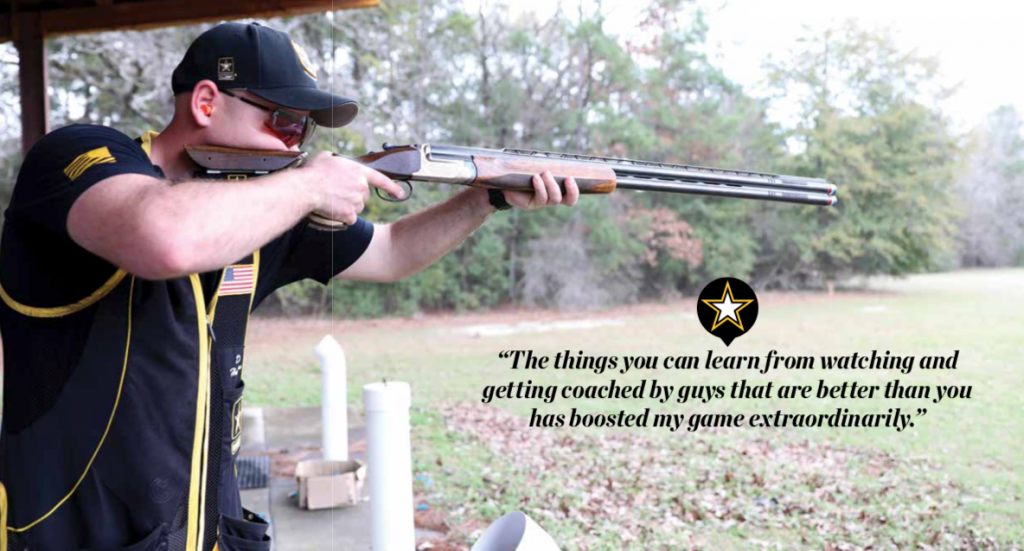
His family did support his desire to learn, though, starting with a trip to a “fun shoot” at a local conservation club when Haldeman was 11—the same age as the youngest students in the USA Clay Target League. And just as many in the League have experienced, that first event sparked a love for competitive shooting.
For Haldeman, that passion would ultimately lead him to one of the nation’s most elite marksmanship groups, earning many medals and other accolades along the way. But with an Olympic appearance still at the top of his to-do list, the 28-year-old pro is just getting started.
EXPLORING AN INTEREST
With his grandfather’s bolt-action 20-gauge shotgun, Haldeman says he might have hit five targets at that fun shoot, but the experience was anything but frustrating.
“I fell in love instantly, honestly,” he says.
Noticing their son’s interest in the sport, Haldeman’s parents met with a coach at the club and asked how to get more involved. Soon Haldeman was going to the club twice a week to practice on a five-person team, participating in regional competitions and a state shoot.
Outside of practice and schooling, he worked at a gunsmithing shop owned by the coach that helped him get started. There he earned enough money to buy his first shotgun, a Winchester 1300.
As he practiced and learned the fundamentals, Haldeman improved, and his parents invested more in their son’s pursuit.
“So my parents really dove into it,” he says. “We bought a camper, we bought a bunch of shells and we started travelling to state shoots all over the country.”
Haldeman initially shot alongside his brother, but eventually he became the sole shooting sports competitor in the family. The hard work started to pay off in 2007 when he made the state team in Ohio as well as the Junior All American Team in American trap.
Looking for a new challenge, Haldeman then shifted gears to international double trap shooting. “And that’s where I saw all of the Army guys and all of the Olympians and stuff like that, which peaked my interest even more,” he says.
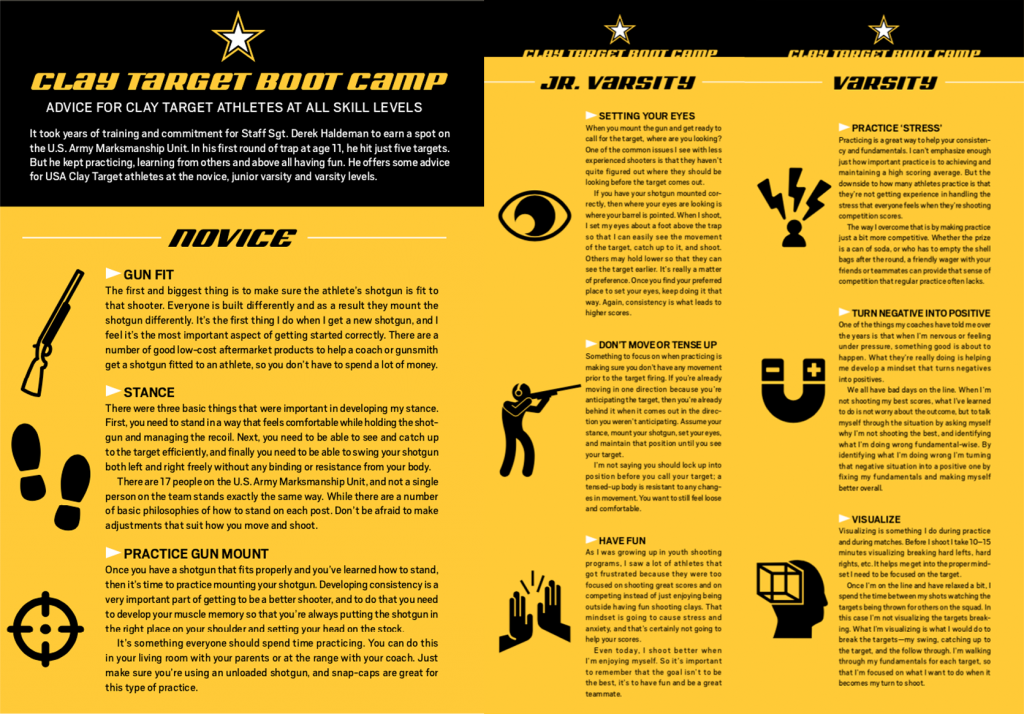
ANSWERING THE CALL
Haldeman went on to win silver, bronze and gold medals at the Junior Team World Championships in Slovenia, Germany and Serbia between 2009 and 2011; enough success for the U.S. Army to notice.
The U.S. Army Marksmanship Unit—first developed to raise marksmanship standards and later tasked with winning national and international competitions and supporting recruiting efforts, among other duties—contacted Haldeman in 2010 about an open double trap spot.
“The military was always, as I got older, one of my things I had a possibility of doing,” Haldeman says. “My senior year of high school, I hit that age where [I asked myself ] do I go to college, do I join the military, do I join the workforce?”
The decision was clear to him after the call. On Feb. 16, 2011, Haldeman set out for basic training at Fort Benning. He graduated in June of that year and went to work with a star-studded shotgun team that had medals and experience from multiple Olympics.
“It was very intimidating to start with,” he says. “But the things you can learn from watching and getting coached by guys that are better than you has boosted my game extraordinarily.”
He says it also helps greatly to not have the pressure of finding his next paycheck, seeking out sponsors, or worrying about equipment or training. His primary job with the military is to shoot—and to shoot well. He says he’ll go through roughly 250 targets a day in his pursuit of that goal. And his teammates and coaches all support each other and help to produce success for all.
Since he’s been on the team, he’s earned several National Championship medals, but he considers his biggest breakthrough to be his bronze medal from the 2015 World Cup in Acapulco.
“National medals are awesome and they do great things for the unit and also my confidence and things like that, but really our end goal here is to win world medals,” Haldeman says.
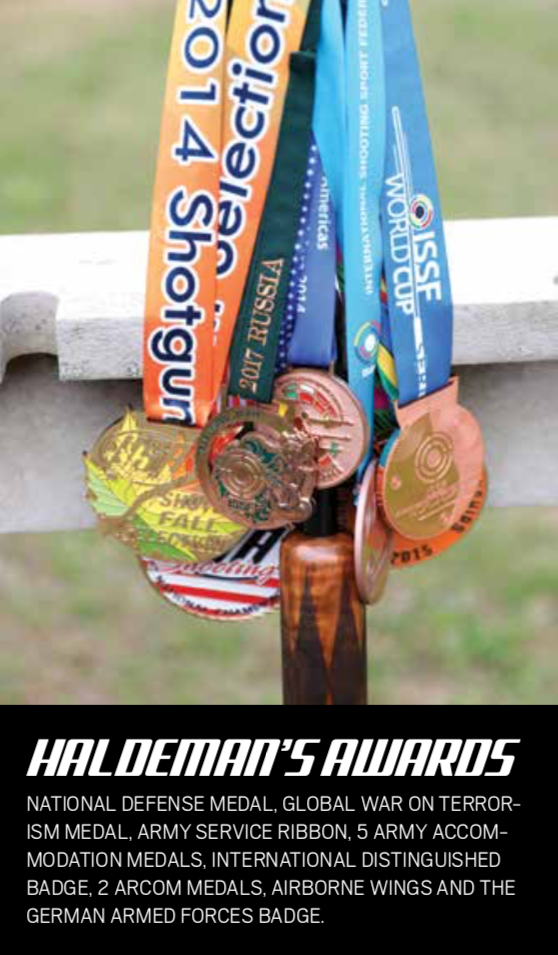
SHIFTING FORMS
In 2016, double trap was eliminated as an Olympic sport, prompting a shift of U.S. Army shooters to trap shooting. Haldeman took the shift in stride, changing guns along with his stance and mounting position, and dedicating each day to practicing the new discipline.
“So that was kind of a shock or a scare that your main game that you’ve shot for all these years is going away, but I pushed through it and trained even harder,” he says.
The extra work resulted in Haldeman making the World Championship Team in 2017 and the finals in Moscow that year. To make that last round, he shot 49 of 50 on his first day, 23 of 25 the second day and 49 of 50 on the third day before winning an eight-way shoot-off.
He ran his first eight targets in the final before his inexperience in that situation surfaced and he ended up finishing fifth. But he learned a lot watching athletes from other countries and participating at that level.
“When the pressure built a little bit, things changed and I wasn’t quite ready for it yet,” Haldeman says. “I hadn’t trained hard enough and I hadn’t been in that situation long enough.”
THE ULTIMATE GOAL
Haldeman’s main focus now is once again making the World Cup Team, this time en route to an Olympic berth. To get there, he’s not trying anything bold and new—just refining the basics that the best shooters in the world have mastered. It’s a lesson he encourages athletes at all ages to remember.
“Polishing the fundamentals is the biggest thing,” he says. “You know, everyone looks for these magic tricks. He’s got this gun, he’s got these glasses, but really your best shooters all they do is polish their fundamentals and they work the fundamentals all the time.”
Haldeman says he’s also shooting more single-barrel rounds, work on dealing with “known” targets, such as a broken target in the middle of the round, and other things he might confront during a match.
“Things that I might come across during a match that I wasn’t prepared for in the past, I’m training to be prepared for that in the future,” he says.


